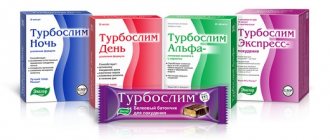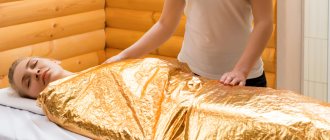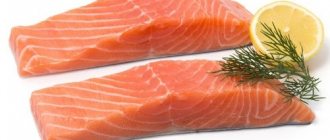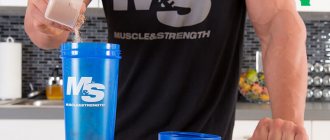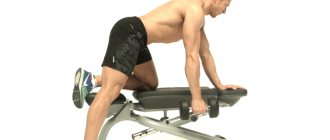Description of chondroprotectors
Chondroprotectors are drugs containing substances that make up the joint (hyaluronic acid, collagen, glucosamine, chondroitin). They are prescribed for preventive and therapeutic purposes to:
- Improve the synthesis of macromolecules of cartilage cells, collagen, glycoproteins.
- Ensure the synthesis of hyaluronic acid, which makes synovial fluid viscous, improving its lubricating and shock-absorbing properties. Thus, it ensures normal, painless movement of the joints.
- Suppress the action of enzymes that destroy cartilage cells.
- Dissolve fibrins, lipids, blood clots that are stuck in the blood vessels in the vertebral area.
- Reduce pain and inflammation in the intervertebral disc area.
There are chondroprotectors on sale that contain one active substance, but all of the above effects can only be achieved using combined means. For example, glucosamine is able to solve goals No. 1, 2, 5, while chondroitin effectively copes with goals 1, 3, 4, 5.
Chondroprotectors. How can they help sore joints?
Treatment of osteoarthritis is aimed at relieving the symptoms of the disease, preventing the progression of structural changes, preserving joint function as much as possible, thereby improving the quality of life of patients.
The complex of therapeutic measures for osteoarthritis includes both non-drug and medicinal methods. Non-drug methods are aimed at correcting risk factors for disease progression, reducing pain, stopping the inflammatory process and include measures to reduce body weight, mechanical unloading of joints, optimizing the motor mode of patients, orthopedic correction, physical therapy, physical therapy, etc. for patients, orthopedic correction, medical physical education, physiotherapy, etc.
In turn, the goals of drug therapy are to relieve inflammation (symptomatic effect) and slow down the structural progression of the disease (pathogenetic effect). The symptomatic effect is achieved mainly by the use of fast-acting drugs (non-steroidal anti-inflammatory drugs and analgesics), as well as slow-acting drugs - chondroprotectors (chondroitin, glucosamine or combination drugs). Local therapy (intra-articular administration of hyaluronic acid, glucocorticosteroids, chondroprotectors) is also successfully used for osteoarthritis. If conservative treatment is unsuccessful, surgeons come to the patient’s aid with their own treatment methods (arthroscopy, arthroplasty, synovectomy, joint replacement). New promising methods of treating osteoarthritis are being actively developed - cartilage transplantation, stem cells, etc.
The effectiveness of the use of chondroprotectors is the subject of constant debate. The choice of drugs, dosage regimen, the severity of their pathogenetic effect (i.e. on the nature of the disease, and not on its symptoms), as well as the advisability of prescribing in general are discussed.
To avoid failure to realize hopes associated with the use of chondroprotectors, the following facts should be taken into account when prescribing them. Chondroprotectors do not “grow” new cartilage where it is lost. They only prevent its further damage and “thinning”. Therefore, in advanced cases of osteoarthritis, one should not hope for a reduction in structural changes. Therapy in this case will be aimed at preserving the cartilage at the level at which treatment began.
Patients with stages 3-4 of the disease must clearly understand what effects can be achieved (pain reduction, increased motor activity) and what cannot be achieved (the appearance of “new” cartilage or its “growth”). At the same time, we must not forget about the duration of treatment. Given the low bioavailability of chondroprotectors (from 5 to 45%), they are prescribed in long courses. The minimum is 2 months, and with a pronounced clinical picture of osteoarthritis, it is advisable to use chondroprotectors for 4 months continuously, followed by a break (about 2 months), after which the course should be repeated.
IMPORTANT! Chondroprotectors are not fast-acting drugs. Their effect unfolds over time and occurs, as a rule, by the end of the first month of use, increasing as treatment continues.
Long-term administration of chondroprotectors has another important goal: to reduce the need for anti-inflammatory therapy, primarily non-steroidal anti-inflammatory drugs, which negatively affect the stomach and have other side effects. Considering the elderly age of the main cohort of patients with osteoarthritis and the presence of a “bouquet” in them, it seems extremely relevant to reduce the number and doses of medications used.
The main substances of drugs related to chondroprotectors are chondroitin and glucosamine , presented both separately and in combination. The question of choosing one or another chondroprotector is the task of the doctor.
Of interest are the results of a double-blind, randomized, placebo-controlled study in which the following treatment options were used: glucosamine sulfate 1500 mg daily, chondroitin sulfate 800 mg daily, a combination drug (glucosamine and chondroitin) and placebo. The study involved 605 patients aged 45-75 years with osteoarthritis of the knee joints and pain. It should be noted that during the study, patients took chondroprotectors and placebo continuously for two years.
The study aimed to compare the symptomatic effect, as well as determine the presence and severity of the pathogenetic effect of various treatment options. To assess the latter, the X-ray method was used.
A mandatory condition for inclusion of a patient in the study is a joint space width of 2 mm or more, which indicates the relative preservation of cartilage in the presence of a clinical picture and instrumental confirmation of osteoarthritis.
The study showed that all patients experienced a decrease in pain syndrome (symptom-modifying effect) during the first year of treatment, while no significant differences were noted between the groups of patients receiving the above treatment regimens.
In terms of the pathogenetic effect, the best result was typical for combined chondroprotectors compared to monotherapy with chondroitin, glucosamine and placebo. The pathogenetic effect, assessed radiographically, was a decrease in the rate of reduction of the joint space.
Thus, therapy with slow-acting symptom-modifying drugs (chondroprotectors) is indicated for osteoarthritis to relieve symptoms of the disease, expand the physical activity of patients, reduce the need for anti-inflammatory therapy, and also (subject to long-term and regular use) to prevent the progression of the disease.
Elena Kunder, Doctor of Medical Sciences, Professor of the Department of Cardiology and Rheumatology of BelMAPO
Mechanism of action of drugs
The task of chondroprotectors is to restore and maintain the integrity of cartilage tissue. To achieve their goal, they:
- Stimulates the development of chondrocytes. These are the main cells of cartilage, which not only form its structure, but also restore damaged cells.
- Reduce the activity of lysosomal enzymes (metalloproteinases), which destroy cartilage tissue.
- Increases the resistance of chondrocytes to anti-inflammatory cytokines.
- Activate anabolic processes (growth) in the cartilage matrix.
- They create all the conditions for the formation of a healthy joint.
Indications for use
For hernia, chondroprotectors are prescribed for:
- pain and crunching in the joints;
- stiffness;
- anemia of the limbs and a feeling of crawling on them;
- cervical, lumbar or thoracic lumbago;
- paresis and paralysis.
The doctor prescribes chondroprotectors for the prevention and/or elimination of conditions and diseases that lead to herniated intervertebral discs:
- lumbar, cervical, thoracic osteochondrosis;
- different types of arthrosis;
- scoliosis and other pathologies associated with spinal curvature;
- spinal column injury, falling on your back, hitting your tailbone;
- dystrophic cartilage damage;
- arthritis - periarthritis (inflammation of large joints).
In complex therapy, chondroprotective drugs are most often prescribed to relieve pain in diseases of large joints
Who should take it?
In situations of high physical activity, the use of these substances as supplements is especially important. Wear on joints from training occurs much faster, which can lead to a number of problems with the musculoskeletal system.
In addition, we must not forget about the injuries that often accompany weightlifting, powerlifting or bodybuilding. By taking additional complexes, which include glucosamine and chondroitin, you can significantly speed up the recovery process.
Additional intake of chondroprotectors is also necessary for elderly people, as well as those who suffer from diseases of the musculoskeletal system (arthrosis, arthritis, etc.).
Will chondroprotectors help with a hernia?
Each type of intervertebral hernia has serious complications, so you should not delay treatment.
See how easy it is to get rid of a hernia in 10 sessions
Intervertebral discs are formations that connect the vertebrae and provide mobility and flexibility to the spine. Inside the disc is a core surrounded by a durable membrane (annulus fibrosus). If it ruptures, the nucleus comes out and compresses the nerves that run down the center of the spinal column. The result is severe pain.
Discs, like the annulus fibrosus, are composed of several types of cartilage tissue. Unlike other organs and tissues, it is not able to receive nutrition from blood vessels. Chondroprotectors really help with hernia, since their active ingredients stimulate the regeneration of connective tissue, prevent the aging process and destruction of the disc, enhance the production of cartilage tissue, suppress the activity of hyaluronidase, and stimulate cartilage repair. They strengthen the discs, preventing the shell from collapsing, and prevent protrusion.
Some chondroprotectors for the spine in case of a hernia contain anesthetics, so it is better to take them during periods of acute pain (Teraflex-Advance). When the discomfort subsides, doctors recommend returning to medications without anesthetics.
Classification by main active component
Chondroprotectors for the spine in case of hernia contain the following substances:
- chondroitin;
- glucosamine;
- hyaluronic acid.
Chondroprotectors of natural origin
For How to do this, read the article about the treatment of hernia of the cervical, thoracic and lumbar regions, drugs rich in glucosamine and chondroitin of natural origin are prescribed. They are obtained from:
- cartilage of animals and fish
(Rumalon, Birtron, Alflutop, Artrofish); - plant components
- extract of fragrant Martinia root, wheat sprouts, mushrooms, nuts, broccoli, seaweed (Piaskledin, Artro-Active).
Unlike synthetic dietary supplements, they are well absorbed and also contain ingredients that have a positive effect on the damaged joint.
Based on chondroitin
Chondroitin is a substance that is part of proteoglycans, which together with collagen create the cartilage matrix. Chondrolone, Honsurid, Structum and other chondroprotectors that contain it perform the following tasks:
- They protect cartilage by inhibiting the activity of enzymes that destroy it.
- Strengthens metabolism in joints and bones, promotes their recovery.
- Helps retain water in joint tissues.
- Reduce inflammation and severity of pain.
- They normalize the synthesis of joint fluid, which improves the mobility of the discs between the vertebrae.
Based on glucosamine
Glucosamine is part of chondroitins and joint fluid. Chondroprotectors based on it (Sustilak, Artoron Flex) improve the permeability of the joint capsule and fermentation processes in cartilage cells. They normalize the deposition of calcium salts in the bones and inhibit tissue degeneration.
Glucosamine can be combined with glucocorticosteroids and NSAIDs. Complex therapy can reduce the severity of pain symptoms due to spinal hernia.
Based on hyaluronic acid
Among the causes of cartilage degeneration is a decrease in the viscosity of synovial fluid. Sinokrom, Fermatron and other chondroprotectors based on hyaluronic acid improve the astringent properties of the lubricant, which allows the spinal discs to withstand greater loads.
1st, 2nd and 3rd generation drugs
Another classification divides chondroprotectors into 3 generations:
- Natural products that contain animal cartilage or plant extracts (Rumalon, Birtron, Piascledine).
- Monopreparations containing only 1 active component - Sinokrom (hyaluronic acid), Dona (glucosamine) or Structum, AKOS (chondroitin).
- Combined products containing several active components. They can be supplemented with minerals, vitamins, and fatty acids. The names of useful chondroprotectors for the spine with a hernia are Artra, Teraflex, Artron Triactive Forte.
New 3rd generation chondroprotectors
By release form
- Capsules;
- pills;
- powder for preparing liquid for oral use;
- solutions for intramuscular or intra-articular injections;
- liquid substitute for synovial lubricant for insertion into the joint.
How do chondroprotectors work?
Chondroitin is part of our bones, cartilage and joints; its task is to retain moisture in the cartilage and stimulate the production of synovial fluid. Lack of chondroitin affects the health of cartilage tissue: it begins to deform, become thinner, and loses strength and elasticity. A decrease in the amount of synovial fluid affects the mobility of the joints: first there is a creaking, clicking of the joint when moving, later pain appears and the mobility of the joints worsens. Chondroitin is used for fractures, arthritis, and osteoporosis.
Glucosamine is a building material for healthy joints and cartilage, which makes them stronger and more elastic; it is also part of chondroitin. In addition, a sufficient amount of glucosamine helps prevent inflammation and pain in the joints. Glucosamine is often used for osteoarthritis, periarthritis, osteochondrosis and spondylosis.
Both glucosamine and chondroitin allow for better absorption of calcium in the body, and also participate in the process of synthesis of sulfur, which is a structural component of joints.
List of the most effective chondroprotectors for hernia
To treat a herniated disc, doctors first prescribe capsules and tablets. Injections are used in serious cases, when the pain has almost deprived a person of mobility.
Tablets and capsules
Oral medications are taken during or after meals with a glass of water. The course of therapy lasts from 20 days to 1.5 months. Then you need to take a break. Supplements in tablets are available without a doctor's prescription.
Piascledine
- Price
: 300 capsules from 1.2 thousand rubles. - Manufacturer
: Laboratoires Expanscience (France). - Active ingredients
: avocado and soybean oils.
Piascledine regulates metabolism in cartilage, stimulates collagen synthesis in chondrocytes, and prevents joint destruction. This chondroprotector for the spine in case of a hernia eliminates inflammation, pain, and restores motor function. This product should not be taken if you are allergic to beans or avocados.
Formula-S
- Cost:
from 308 rub. for 60 pcs. - Manufacturer:
CSB Nutrition Group (USA) - Active ingredients:
glucosamine, chondroitin, immunoglobulins G, manganese, plant extracts.
Formula-C is a complex action medicine that:
- stimulates the synthesis of collagen and bone-cartilaginous tissue cells;
- reduces joint pain and inflammation;
- eliminates spasms;
- improves the elasticity of ligaments;
- helps eliminate crunching when straightening the spine;
- stimulates calcium absorption.
The drug has a powerful tonic and rejuvenating effect, improves immunity. Formula-C accelerates cell regeneration, fracture healing, and healing. The product increases physical activity, performance, improves protein production and energy exchange in muscles. The interaction of Formula-C with other medications has not been studied.
Artra
- Price:
from 1.3 thousand for 60 pcs. - Manufacturer:
Unipharm, Inc. (USA) - Active ingredients:
chondroitin and glucosamine
Artra is the latest development of American pharmacists. The drug restores fibrocartilaginous tissue, blocks enzymes that destroy intervertebral discs, relieves inflammation and pain. Under its influence, the synthesis of collagen and proteoglycans and the properties of synovial fluid improve.
Artra is prohibited if you are allergic to the components of the drug. You should not drink it if you have kidney problems or phenylketonuria. The drug is prescribed with caution for diabetes, asthma, and a tendency to bleed. The medicine may cause diarrhea, constipation, flatulence, abdominal pain, and dizziness.
Arthra can be used as part of complex therapy. The medicine enhances the effect of antiplatelet agents and anticoagulants and is compatible with glucocorticosteroids. It improves the absorption of tetracycline antibiotics and reduces the effect of penicillin.
Dona, Glucosamine and Sustilak
- Price:
for 60 tablets from 900 rubles. - Manufacturers:
Dona - Meda Pharma GmbH & Co.KG (Germany) / Glucosamine - Unipharm, Inc. (USA) / Sustilak - Celebrity Biopharma, Ltd. (India) - Active ingredient:
glucosamine
Dona, Glucosamine, Sustilak are analogue drugs that eliminate inflammation and improve the quality of synovial fluid. These chondroprotectors for hernia of the lumbar spine stimulate metabolism in the joints. They normalize calcium deposition in bone tissue and stop cartilage degeneration.
Read about other treatment methods in the article “Treatment of lumbar disc herniation without surgery.”
The drugs are compatible with paracetamol, other NSAIDs, and glucocorticosteroids. They enhance their anti-inflammatory and analgesic effect.
Structum
- Cost:
1.5 thousand rubles. for 60 pcs. - Manufacturer:
Pierre Fabre (France) - Active substance:
chondroitin
Structum is a new generation drug that stimulates cartilage regeneration, improving its metabolism. It reduces calcium loss, which has a positive effect on the condition of the skeletal system. The medicine blocks inflammatory processes, improves joint mobility, and eliminates pain.
Structum is prescribed cautiously if there is a tendency to bleeding. Complications are rare in the form of itching, urticaria, nausea, and vomiting. In complex treatment, Structum enhances the effect of indirect anticoagulants, fibrinolytics, and antiplatelet agents.
Teraflex
- Price:
from 1.2 thousand rubles. for 60 capsules - Manufacturer:
USA - Active ingredients:
glucosamine and chondroitin
Teraflex is a new generation product that stimulates cartilage regeneration and prevents joint inflammation. It makes the cartilage resistant to mechanical stress and relieves pain. It inhibits the enzymes that cause cartilage degradation.
Theraflex should not be taken if:
- allergies;
- phenylketonuria;
- serious kidney damage;
- pregnancy and lactation.
In rare cases, it causes dizziness, nausea, and vomiting.
The most effective chondroprotectors in the form of tablets and capsules
Solution for oral use
If you don’t like pills, you can buy Artracam, which comes in powder form for oral use. The product of the Russian manufacturer PharmVilar contains glucosamine, and therefore is a liquid analogue of Dona and Sustilak. They drink it once a day for 6 weeks, then 2 months. - break. Price for 20 packs. 1.5 g each starts from 715 rubles.
What types of intervertebral hernias are most difficult to treat?
4 stages of treatment for intervertebral hernia
Injections
Chondroprotectors for the spine for hernia in injections are prescribed when there is no benefit from the pills. First, the doctor prescribes intramuscular injections; in severe cases, an injection is given into the joint. The medicine directly enters the blood or joint, bypassing the digestive tract, and therefore causes fewer side effects. The downside is that injections should only be given by a specialist.
Mucosat
- Price:
5 amp. from 400 rub. - Manufacturer:
Sintez OJSC (Russia) - Active ingredients:
glucosamine and chondroitin - Release form:
solution for intramuscular injection
Mucosat is prescribed for degenerative diseases of the spine. In case of serious cartilage damage, the product is suitable as replacement therapy. Mucosat is administered 1 ml every other day. If the medicine is well tolerated, on day 4 the dose is increased to 2 milliliters. The therapeutic effect is noticeable after 3 weeks. The course of treatment is 25-30 injections, a repeat course after 6 months.
Alflutop
- Cost:
10 amp. from 1 thousand rub. - Manufacturer:
SC Zentiva (Romania) - Active ingredients:
bioactive concentrate of small marine fish - Release form:
intramuscular and intra-articular injection
Aflutop is a new generation product that contains chondroitin, amino acids, potassium, calcium and other substances that promote bone regeneration. The product blocks inflammation, pain, normalizes metabolism in the fibrocartilaginous tissue of the discs.
Aflutop is used:
- Intramuscularly: 1 ml for 20 days or 2 ml for 10 days.
- As an intra-articular injection: 1-2 milliliters every 3-4 days. The course of treatment is 5-6 injections.
The product should not be taken if you are allergic to the components of the drug or seafood. Aflutop is not prescribed to pregnant women, nursing mothers, or people under 18 years of age.
Chondroitin sulfate
- Price:
10 bags from 210 rub. - Manufacturer:
Ellara MC (Russia) - Active ingredient:
chondroitin in powder form for injection - Release form:
intramuscular injection
Chondroitin sulfate is a new generation remedy that relieves pain and protects cartilage from destruction. It stimulates the synthesis of chondrocytes and stops joint degeneration. The drug has a good effect on bones, improving phosphorus-calcium metabolism. Contraindicated if you have a tendency to thrombosis, bleeding, pregnant women, or during lactation.
Elbona
- Price:
6 amp. from 700 rub. - Manufacturer:
Ellara MC (Russia) - Active ingredient:
glucosamine - Release form:
intramuscular injection
Elbona improves the regeneration of bone and cartilage tissue, joint mobility, relieves pain and inflammation. Contraindications include phenylketonuria. The drug is prescribed cautiously for heart failure and low blood pressure. During treatment, alcohol is prohibited, sugar and liquid intake must be limited.
The most effective chondroprotectors in the form of injections
Intra-articular fluid substitutes
If there is a deficiency of synovial fluid, the doctor inserts a special endoprosthesis into the joint, which is an analogue of joint lubricant. It is based on hyaluronic acid, which, after injection, evenly covers the joint. The joint gap widens, the hernia begins to put less pressure on the nerve endings, reducing pain.
The contents of the ampoules are sterile. If the packaging has been damaged, the product should not be injected into the joint. If there is a solution left after the injection, it is prohibited to reuse it.
Substitutes cannot be used with antiseptics containing quaternary ammonium salts, since hyaluronic acid may precipitate.
Fermatron
- Price
: from 2 thousand rubles. for 1 amp. - Manufacturer
: Hyaltech Ltd. (England)
The recommended dose is 3-5 injections once a week. The duration of the course is determined by the doctor. The endoprosthesis should not be inserted into an area where infectious processes occur. It is not recommended to combine it with other medications.
Sinokrom
- Cost:
1 amp. from 1.2 thousand rubles. - Manufacturer:
Croma Pharma (Germany)
The recommended course is 3-5 injections, 1 injection per week, which allows you to get rid of pain for six months. The drug should not be administered if you are allergic to its components or have bacterial arthritis. There are no comments from the manufacturer on the compatibility of the endoprosthesis with other intra-articular solutions.
Ostenil
- Price:
1 pc. from 1.5 thousand rubles. - Manufacturer:
TRB Chemedica AG (Germany)
The injection is given once a week, no more than 5 times, and the course is repeated after 6 months. There is no information on the compatibility of Ostenil with other intra-articular fluids. The patient can additionally take oral analgesics for severe pain in the first days of treatment.
Synvisc
- Cost:
2 ml from 5 thousand rubles; 6 ml from 15 thousand rubles. - Manufacturer:
Aventis Pharma (Russia)
The active component that Sinvik contains is called hylan GF 20 - a biological analogue of hyaluronan. The drug has no general effect, affecting only the damaged joint.
Contraindications are infection in the area of the diseased disc, its inflammation. Synvisc cannot be injected into synovial tissue or the joint capsule - strictly into the joint space.
The most effective chondroprotectors in the form of intra-articular fluid substitutes
Effective chondroprotectors for arthrosis
Please note that some drugs, such as piascledine and traumeel, although they stimulate collagen production and cartilage regeneration, are not chondroprotectors.
Oral
For the treatment of osteochondrosis, chondroprotectors are most often used:
- artracam (budget sachets with high bioavailability, glucosamine, chondroitin and vitamin C);
- arthra;
- Don;
- teraflex;
- structum;
- chondroitin complex;
- alflutop;
- formula C;
- artiflex;
- Sustagard Arthro;
- movex Active;
- arthrone complex;
- protekon.
Injectable;
The following chondroprotectors for joints with arthrosis are suitable for intra-articular administration:
- alflutop;
- ostenil (does not contain animal proteins);
- sinochrome;
- fermatron;
- synvisc.
These drugs effectively replace joint fluid thanks to the components of hyaluronic acid. Direct supply of glucosamine and/or chondroitin sulfate to the body is provided by:
- mucosate;
- artiflex;
- elbon;
- rumalon;
- arteparon.
External
Effective chondroprotectors for arthrosis include the following ointments, creams and gels:
- chondroxide;
- artiflex;
- Horsepower Glucosamine-Chondroitin;
- arthrocin;
- Honda;
- teraflex chondrocream.
The main advantage of chondroprotectors is that they are safe and can be taken “proactively” in order to prevent osteoarthritis. So, if you suspect you have a tendency to this disease, take artracam or another chondroprotector in annual courses. This will help you delay the aging of your joints!
Images designed by Freepik
Recommendations for patients
Medicines to protect joints should only be used with the permission of a doctor. These are slow-acting and long-acting drugs, so you cannot expect instant results from them.
During treatment, the patient must follow the following instructions:
- Do not lift weights, do not overload the spine.
- Monitor your weight and, if necessary, lose weight.
- Dress well, wear warm shoes in winter, if your feet get wet, change your shoes immediately.
- Move more, walk, do exercise therapy when there is no exacerbation (acute pain).
- Don't forget to rest.
We use non-surgical hernia treatment techniques
Read more about our unique technique
FAQ
Are there alternatives/substitutes for chondroprotectors?
It cannot be completely replaced. To prevent the degradation of cartilage tissue, watch your diet. Add seafood, cartilage, dishes with rich broth, gelatin (jelly, aspic), soy, avocado to the menu.
For what other diseases are chondroprotectors used?
The drugs are prescribed for all diseases associated with damage to joints and cartilage.
Are chondroprotectors available in the form of ointments?
There are such drugs (for example, Chondroitin ointment), but they work worse than drugs taken orally. The effectiveness and pharmacodynamics of external chondroprotectors have not been studied.
Literature:
- Dr Jason Theodosakis, Connaître, prévenir, soigner l'arthrose, editions de Fallois, 1997
- Kahan, D. Uebelhart, F. De Vathaire, Arthrose et rhumatisme, February 2009, volume 60
- Nikiforov A.S., Mendel O.I. Degenerative diseases of the spine, their complications and treatment // Breast cancer. 2006
- Rational pharmacotherapy of rheumatic diseases: A guide for practicing physicians / Ed. ed. V.A. Nasonova, E.L. Nasonova. M.: Litterra, 2003. T. 3.
Themes
Intervertebral hernia, Spine, Pain, Treatment without surgery Date of publication: 12/10/2020 Date of update: 09/23/2021
Reader rating
Rating: 5 / 5 (4)
